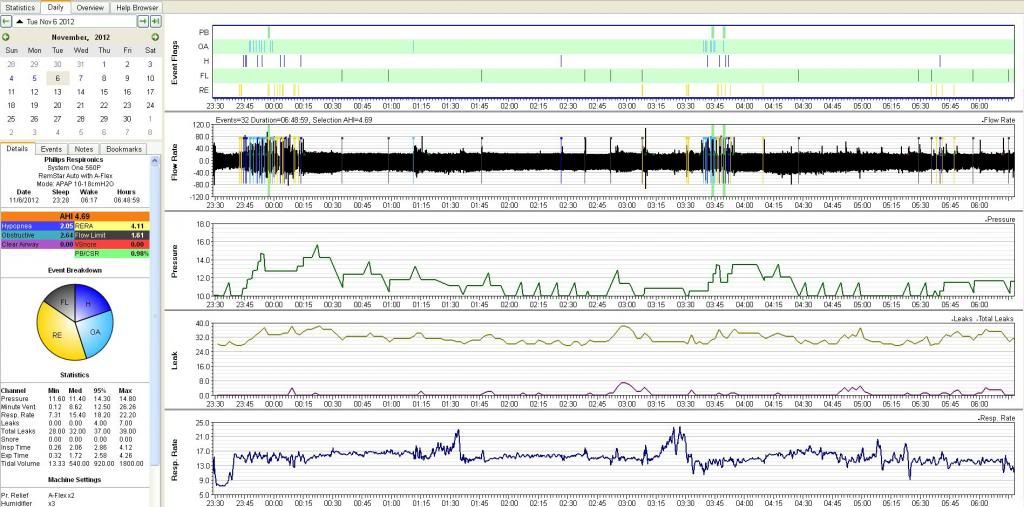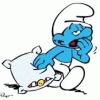Sleepless_in_LM wrote:Yikes! Last nights was the worst one yet. It took me a few more minutes to fall asleep since I was looking for those aliens, but once asleep (or at least I think I am asleep), I had 47 minutes with 58 events and an AHI for that time period of over 70.
Today I ordered an oximeter. If my O2 levels are OK, than I am thinking I don't need to worry about this. If there not, well then I guess it means a trip to the sleep doc.... Does my logic seem reasonable?
Hi again Sleepless_in_LM!
Pulse oximeters are the bomb - I think every OSA CPAP user should have one. More data has always proved helpful.
In this case we may have the data we need to see what is going on. In the cases of high AHI the machine ramps up pressure at or just prior to the times. So lets take a very close look at what causes the ramp up of pressure.
I would love to see a zoom that includes just a bit of time before the ramp to just a bit of time after the pressure ramp up levels off.
I would love to see a zoom of about 5 minutes before the ramp starts including the first 10% of the ramp.
Some other questions for you:
Do you fall asleep on your back?
If you use a pillow is it under your head when you first fall asleep?
What do you normally do for the hour before bedtime?
When you get the Pulse Oximeter consider the oxygen saturation as follows in terms of CO2 levels:
99% Probably hyperventilation - probably true hypocapnia
98% Some hyperventilation - probably at the edge of hypocapnia
97% Likely over breathing - have moved away from eucapnia toward hypocapnia
96% Possibly over breathing - possibly moved a bit toward hypocapnia
95% Possibly breathing at eucapnic rates - this is likely good.
94% Possibley breathing at eucapnic rates - this is likely good
Have a great weekend!
Todzo






















